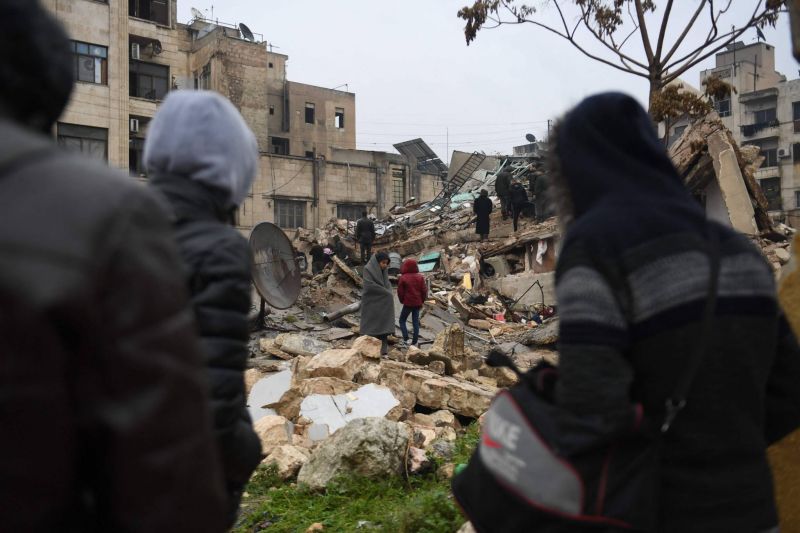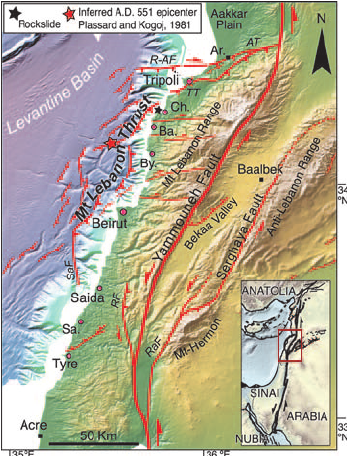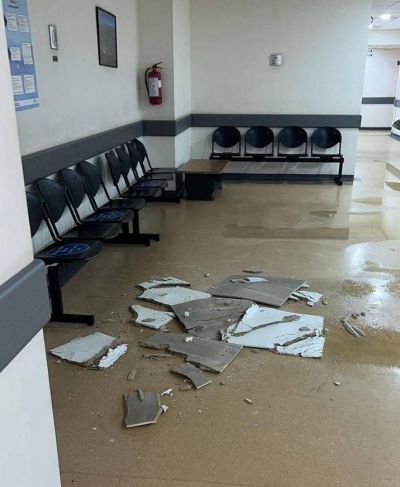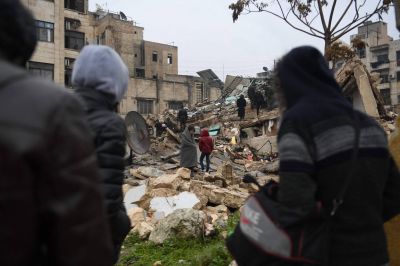
People gathered near collapsed buildings in Aleppo after the powerful earthquake, Syria, February 6, 2023. (Credit: AFP)
Early Monday morning, a deadly earthquake measuring 7.8 on the Richter scale shook parts of Turkey, Syria, Lebanon, Jordan and Cyprus. Its epicenter was located in southern Anatolia, in Turkey.
L'Orient-Le Jour spoke to Marleine Brax, director of the National Center for Geophysics, part of the National Council for Scientific Research (CNRS), about the implications for Lebanon and what to expect in the coming hours and days.
What is the fault line that has moved and how might Lebanon be affected?
This morning, the Levant fault line awoke from its slumber. This fault zone extends from south Turkey to the Red Sea, and passes through Lebanon. The 220-kilometer-long stretch running under Mount Lebanon is known as the Yammouneh fault line. This morning's earthquake originated in the northernmost part of the Levant fault line.
The risk of aftershocks is always present and we have recorded several, but they are too weak to be felt.
It is important to know that the more we are separated from the big earthquake by time, the more the intensity of aftershocks could decrease.
In my opinion, the probability of a next major earthquake on another segment of this great fault is minimal, especially since the epicenter is so far away.
What does the Richter scale tell us about the power of this 7.8 degree earthquake?
Today’s earthquake was the strongest earthquake to occur along this fault line since 1202, which was estimated at 7.5 on the scale, taking into account the margin of error used to calculate magnitude of past earthquakes. Historical sources indicate that the 1202 earthquake caused severe damage in the Mount Lebanon region, similar to the scale of damage observed at the epicenter of this earthquake in Turkey and Syria.
 Faults of the Levant fault zone in Lebanon (Credit: Research Gate)
Faults of the Levant fault zone in Lebanon (Credit: Research Gate)
On Twitter, one man predicted a major earthquake in this region only a few days before it occurred. Can such events be predicted?
Absolutely not. Science does not yet give us the means to predict such events to a specific day or hour. We can know that there is a risk of a large earthquake, but only over a longer period, sometimes with margins of hundreds of years. Statements like these on social networks are always made, but the one before the earthquake is remembered, which is normal.
On the other hand, regarding other segments of this fault line, we cannot say today if or when they could cause new major earthquakes, even if we hear predictions in this sense. Seismology is a science that is not exact.
Can we say which regions in Lebanon would be most at risk in case of an earthquake?
It is very difficult to say that this or that region is more at risk than others. It depends on the state and age of the infrastructure and the buildings, the ground on which they are located and their solidity. Above all, it depends on the distance from the epicenter of the earthquake.
This article was originally published in French on L'Orient Le-Jour.


